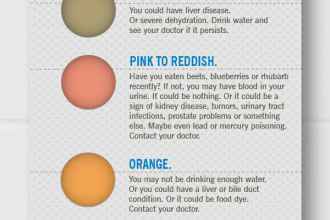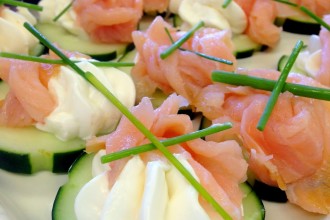Literally every function of your body from your cells to your organs is controlled by proteins. Hair and nails are predominantly made of protein, your body uses protein to build and repair tissues, make enzymes, hormones and other body chemicals including neurotransmitters responsible for mood, cognition and immune function. Protein is also an important building block of bones, muscles, cartilage, skin and blood.
On top of this there is some evidence that high-protein diets induce more fat loss than other diets. When it comes to feeling full, clinical studies consistently show that high-protein diets increase satiety and decrease hunger compared with high-fat or high-carbohydrate diets. Also, most, but not all studies show that most people on high-protein diets consume approximately 10% less energy (roughly 200 calories) per day, which could account for at least some of the weight loss seen with this type of diet.
Most of us get enough protein, but it’s important to know that our individual requirements vary, depending on factors such as life stage, injury or illness. Also, certain groups of people have increased protein requirements. RDAs vary but on average it is 55g [per day] for men, 45g for women and approximately 70 grams for pregnant and nursing women. Men generally need more than women, people with blood sugar and metabolic problems need more, as protein has a stabilising effect on blood sugar. Athletes and people who train hard and want to add or maintain muscle mass have higher requirements as protein is required to build and rebuild muscle.Vegetarians and vegans are often low in protein. A higher protein diet can also help protect the elderly and the chronically ill from the effects of muscle wasting. And as high stress levels can lead to blood sugar imbalances, increasing protein intake, especially in the morning, can boost energy levels, reduce jitteriness, agitation and mood swings, improve sleep and sharpen brain function.
Signs you’re not getting enough protein:
You Crave Sugar: One of the first signs you’re low on protein is that you start craving sweets and feel like you’re never quite full because one of protein’s most critical functions is keeping your blood sugar steady, so if you’re lacking protein, your glucose levels will roller coaster, encouraging you to reach for a quick sugar fix.
Your Brain Feels Foggy: Balanced blood sugar is essential for staying focused. So when you’re protein-deprived and your glucose levels are fluctuating constantly, you’ll most likely be experiencing brain fog. Protein at meals helps slow the release of carbs for steady energy.
You Get Sick Constantly: Protein is needed to build our immune system. If you catch colds or infections more often than everyone else and you’re otherwise in good health, a protein deficiency may be to blame. Also, our skin is our largest immune organ so if you suffer hangnails or poor wound healing your skin may be indicating a shortage of protein, leaving you vulnerable to infection.
You Feel Weak: Protein is essential for building muscle so if you don’t get enough of it, your muscles may start to shrink and you’ll feel weak and unable to exercise.
Your Hair is Falling Out: Protein is the building block of all of your cells; this includes your hair follicles. If you’re loading up on carbs and skimping on the protein, you may notice hair thinning (although, this can also be a sign of other conditions, like thyroid issues).
To work out your individual requirement for protein, check out http://www.healthcalculators.org/calculators/protein.asp. If it turns out you’re not eating enough, here’s some easy ways to increase protein in your diet:
Breakfast:
- Starting your day with a protein rich savoury breakfast will keep your blood sugar stable and keep you full up for hours
- If you love cereal – switch from cow’s milk to a nut milk such as unsweetened almond milk and add handful nuts/ seeds/flax seeds
- If you have time to rustle up a hot breakfast – poached or scrambled eggs on toast with a side of avocado. Omelettes and frittatas keep well in the fridge for a few days so make one when you have time and eat during the week. Or add protein powder to porridge.
- If you want to grab something and go -peanut or almond butter whole wheat toast or Rye bread
- If you prefer a vegetarian option go for mashed avocado on toast, salt, pepper and lemon
- If fish doesn’t frighten you – try sardines / mackerel or smoked salmon on toast with a squeeze of lemon and pepper
- On a weekend, for a lazy brunch – add an egg to pancakes if you’re making them from scratch
- Prefer to drink your breakfast? Add live natural yogurt, berries, nuts, coconut oil, and protein powder to a blender and whizz up a smoothie. You can get frozen berries from your supermarket all year round and I like pulsing pea protein powder http://www.goodnessdirect.co.uk/cgi-local/frameset/detail/663155_Pulsin__Pea_Protein_Isolate_250g.html
Snacks:
- 1 x Dr Kargs seedy crisp breads & a tablespoon of cottage cheese
- 1 apple, five almonds, walnuts and 2 teaspoons of pumpkin seeds
- Peanut butter and apple slices
- Make your own trail mix, lightly toast almonds, sun flower and pumpkin seeds, cashews, add a few raisins, or try spicing it up with a pinch of chili powder
- For a sweet treat try six ounces of Greek yogurt with a tablespoon of raw almonds and a dash of honey or mixed berries
Lunch:
- Salads or open faced sandwiches with ham, roast beef, chicken breast, turkey, smoked salmon, or prawns add slices of avocado. Use (lemon/ olive oil drizzle or pesto)
- Hummus /oat cakes – baby carrots, peppers, cherry tomatoes or other vegetables
- Mackerel pate / Tuna sandwich
- Add hard-boiled eggs, crumbled cheese, nuts and seeds to salads
- Home-made chicken / turkey and vegetable soups
Dinner:
- Grilled chicken or prawns – add pesto or spicy peanut or Tikka with yogurt sauce for a different twist
- Add nuts and seeds to stir fries
- Add kidney beans, chickpeas, quinoa, lentils, nuts, and or low-fat dairy products into casseroles, and warm salads
- Incorporate protein into side dishes – hummus is easy to make if you have a blender, quinoa, a gluten free grain is loaded with fibre serving. Add it to stir fries and salads for an extra hit of protein.
And if you’re vegetarian; here are the best non meat sources of protein:
- Quinoa: Now available from most supermarkets, quinoa is a wholegrain that is a good source of protein and is rich in fibre, too. Unusually for a grain, quinoa offers an impressive 13 per cent of complete protein. Cook like rice. Adding some vegetable or chicken stock enhances the nutty flavour. Quinoa can also be found ready-cooked, making an excellent fast food. Just two and a quarter portions contain a chicken fillet’s worth of protein.
- Avocado: Avocado is two per cent complete protein and it also contains fibre, which aids healthy digestion. Unusually for a fruit, avocado does contain protein as well as carbohydrates and omega 6 essential fats, which can help reduce low-density lipoprotein, the unwanted type of blood cholesterol. In terms of protein content, 15 avocados equal one chicken fillet.
- Peas: Fresh or frozen, peas are rich in fibre, Vitamin K and minerals as well as Vitamin C. The protein content is about five per cent, and as peas aren’t a complete protein. Combine them with chick peas or brown rice, or top with grated cheese to get the whole range of amino acids.
- Chick peas: Low in fat and yet high in protein, chick peas are a great addition to the diet. They are inexpensive, too, so make a nutritious low-cost alternative to poultry and meat. Chick peas are 23 per cent protein, but aren’t complete, so mix with another bean, some rice or, as in hummus, some sesame seeds.
- Miso soup: Made from fermented soya beans, miso soup is a traditional Japanese food. Soya beans contain isoflavones that can help reduce overall cholesterol and also combat hypertension, and offer more than 12 per cent complete protein. Miso also contains probiotics similar to those that are found in live yogurt, so can help combat bloating and improve digestion. Three bowls equal one chicken fillet.
- Peanut butter: Peanut butter is 28 per cent protein, and contains monounsaturated fats which can offer some degree of protection against cardiovascular disease. Peanuts also contain resveratrol, the same antioxidant found in red wine, and protective of heart health. It is an incomplete protein.
- Coconut (Milk & fresh) Coconut is a complete protein but is also rich in fibre. Be careful of the fat content as coconut flesh is high in saturated fat. Use the milk or grate flesh over rice or make a Thai curry with peas and rice. Nine servings equal one chicken fillet.
- Brown rice: Brown rice is a wholegrain that is rich in minerals as well as a high-fibre food which gives it a low score on the glycaemic index. It contains around 2.5 per cent protein. Not complete, so combine brown rice with other incomplete proteins to offer all the essential amino acids.
- Beetroot: Beetroot is low in calories and rich in several antioxidants, including betanin, which has anti-inflammatory properties and promotes efficient liver function. It is a complete protein and so useful to add to other protein foods. Six small beetroots equal one chicken fillet. Three per cent complete protein. Oats are also rich in betaglucans which have been shown to reduce overall cholesterol levels.
- Oats: Oats are rich in manganese and a good source of selenium and are rich in betaglucans which have been shown to reduce overall cholesterol levels. Oats are rich in manganese and a good source of selenium, both potent antioxidants. Oats have a low score on the glycaemic index and can help keep you feeling fuller for longer. Eleven servings equal one chicken fillet.
Shani Shaker BA (hons), dipION, mBANT, CNHC, is a registered nutritional therapist with a focus on regenerative and functional nutrition, disordered eating, addiction and mental health. Based in London her services include one-to-one coaching, group classes and Skype sessions. Contact her at [email protected]
Disclaimer: The information provided is intended for your general knowledge only and is not a substitute for professional medical advice or treatment for specific medical conditions. Please consult your healthcare provider with any questions or concerns you may have regarding your condition. Supplementation should only be temporary. If you’re eating a nutrient-rich diet, extra supplementation should only last for a month or two, just long enough to resolve the deficiency.




